There are three main types of vanilla available for purchase, and I’d often wondered the similarities and differences among them. If you’re like me, hopefully this post will help identify the different types of vanilla.
The differences are pretty subtle, but they are there. Once you decide which is your favorite–or you decide to make your own vanilla extract exactly the way you want it, you can use it to flavor everything from creme brulee to whipped cream pound cake to the best hot fudge sauce.
This post is part of my ingredient function series, and all those posts are neatly housed in the Ingredient Function section. Let’s jump in.
Pastry Chef Online Participates in Affiliate Programs. If you make a purchase through one of my links, I may earn a small commission. For more information click to read my disclosure policy
The Magic of Vanilla
I am always amazed when people use the word vanilla as an adjective to describe something or someone who is plain, boring or lackluster.
Vanilla is one of the most complex flavors around, containing upwards of 200 different flavor compounds.
Due to the labor-intensive nature of its cultivation, harvest and processing, vanilla is also second only to saffron in cost, and the price has risen quite a bit over the last few years due to difficult growing conditions, shipping cost, and more.
While it is true that the majority of what we think of as the “smell” or “taste” or vanilla comes from vanillin, there are tons of other compounds that serve to round out and add nuance to the flavor.
Imitation Vanilla
Imitation vanilla, on the other hand, is composed almost entirely of one flavor note: vanillin. That’s why imitation vanilla is both less subtle and less complex than true vanilla derived from vanilla beans.
From now on, if you want to describe something or someone as being plain, boring or lackluster, please use the term vanillin.
Is “Clear Vanilla” Imitation Vanilla?
Clear vanilla is definitely imitation vanilla, so it is pretty much straight up vanillin. Clear vanilla is useful when you want vanilla flavor but you still want your icing to be bright white.
Real vanilla is almost always brown, and using a scraped vanilla bean will give you little specks in your frosting, so for a super white vanilla-flavored icing, clear vanilla is the only way to go.
Why Compare the Different Types of Vanilla?
Recently, I purchased three different vanilla extracts:
- Madagascar Bourbon
- Mexican
- Tahitian.
I was curious to try them in a head-to-head taste test since I had some preconceived notions of which type of vanilla was “best” without really ever trying all of them for myself.
In the restaurants, we used Madagascar Bourbon Vanilla pastes and extracts.
I’ve used Mexican vanilla beans before in pudding, and I love the woody mysteriousness of it, and although I adore Sonoma Syrup’s Vanilla Bean “Crush” (a blend of Madagascar Bourbon and Tahitian vanilla), I’d never had Tahitian vanilla on its own.
Now I had the opportunity to try all three vanillas, side by side. (Some vanilla is produced in both Indonesia and India, but I haven’t come across it before. If I can find some, I’ll give them a whirl, too).
This vanilla is so fragrant and so gorgeous, y'all. I love it in anything where vanilla really needs to shine, like creme brulee, excellent vanilla ice cream, or creme Anglaise. This is the good stuff you break out when vanilla is the star of the show.
My Preconceived Ideas About the Types of Vanilla
- Madagascar Bourbon vanilla is the gold standard of vanillas.
- Mexican vanilla extract is kind of shady, although the beans are great.
- Tahitian vanilla is mostly about aroma, not actual flavor.
- The differences among the three types of vanilla will be readily apparent.
Note that these preconceptions did not necessarily all hold up after tasting.
Vanilla Taste Test
If I were conducting a scientific experiment, I would have had a “control group” that didn’t contain any vanilla at all, but I wasn’t, so I didn’t.
Here’s what I did to conduct my vanilla taste test:
- I smelled and tasted the vanillas straight.
- I smelled and tasted them diluted in water.
- I smelled and tasted them in whole milk.
- I smelled and tasted them in vanilla pudding (stirring in the extracts off the heat).
- I smelled and tasted them in vanilla shortbread (baking the extracts in, this time)
If I’d had a control group, I would have just tasted straight milk and made pudding and cookies without any vanilla in them at all.
But I’m only human and there are only so many glasses of milk One can drink and cookies and pudding that One can eat!
A Note on the Madagascar Bourbon Vanilla I Used
I also need to note that the Madagascar Bourbon vanilla I have is paste, which aside from vanilla extract also contains sugar, vanilla beans, gum tragacanth and a small amount (0.1%) of potassium sorbate as a preservative.
To try and keep the tests as fair as possible, I used a bit more of the paste and tried really hard not to pay attention to the sweetness.
Nielsen Massey's vanilla paste is rich, sweet, and thick. A little goes a long way, so use it sparingly. I especially like it in ice cream, creme brulee, and panna cotta: desserts where flecks of vanilla bean enhance the visual appeal of the dish.
Vanilla Tasting Notes
Tasting the Extracts “Straight”
To me, concentrated vanilla extract smells kind of like Play-Doh.
Then someone commented here that Play-Doh smells like vanilla and not the other way around. Of course!
I hope I’m not the only one. Having said that, the Madagascar Bourbon and Tahitian vanillas both smelled very similar to me. Both have an aroma that is subtle, sweet, and spicy, although the Tahitian smelled a bit sweeter to me.
The Mexican vanilla has a few deeper notes. It’s a bit more woody and earthy; a bit mysterious. It smells like Mysterious Play-Doh.
Flavor-wise, the Madagascar Bourbon tastes most like “standard vanilla” to me while I tasted the Tahitian more in the air in my mouth rather than on my tongue.
That tells me that the Tahitian is more about aroma and less about actual taste. Or rather the flavor is carried more by the aroma, if that makes sense.
The bass notes (bass as in low on the scale, not as in fish) in the Mexican vanilla translated to more bass flavor as well. It’s a bit hard to describe, but the Mexican vanilla has more “dark wood” flavor than the other two.
Smelling the Aroma in Water
Just like Bourbon and Scotch open up when just a few drops of water are added, I wanted to smell and taste the vanilla in water as well.
Rather than adding a few drops of water to each vanilla, I added 1/4 teaspoon of vanilla to each of three 2 oz glasses of filtered water. After all, vanilla is pretty expensive!
Here’s what I found:
- I could barely smell the Madagascar Bourbon vanilla in the water, even with my nose right down in the glass.
- The Tahitian had a very apparent, sweet and vanilla-y aroma
- The Mexican vanilla was almost as hard to detect as the Madagascar Bourbon vanilla was.
Tasting the Vanilla in Water
I also tasted the water, and the same results as the “straight up” tasting played out more subtly in this test:
- the Madagascar and Tahitian both tasted of sweet vanilla, although the flavor was more “in the air” for the Tahitian.
- The Mexican vanilla also had a sweet vanilla flavor supported by that extra woody note.
Tasting in Whole Milk
More than any of the other tests, the milk test really highlighted the differences among the three vanillas.
I’m not sure whether it was because of the fat in the milk or the proteins or the milk sugars, but whatever it is about milk, it really helps make obvious the differences in aroma and flavor.
- The milk with the Madagascar vanilla in it both smelled and tasted like melted Philadelphia-style (no egg) ice cream. It was kind of amazing, really.
- The Tahitian vanilla milk smelled sweetly of vanilla, but again the flavor was mostly in the air in my mouth and not actually on my tongue.
- The Mexican vanilla milk smelled fairly strongly of alcohol, which I thought was odd since there was only 1/4 teaspoon of vanilla in 2 oz of milk. I couldn’t really taste the vanilla in the milk at all–it just tasted like milk, but more so. Like the best milk ever, but not necessarily vanilla.
Maybe the vanilla flavor of Mexican vanilla has a creaminess to it that allows it to blend in to enhance and not overpower??
Tasting the 3 Vanillas In Vanilla Pudding
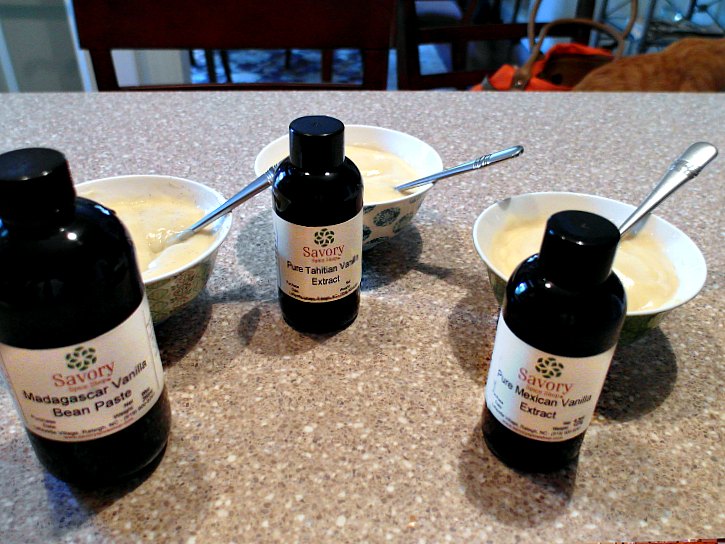
I made my standard vanilla pudding containing whole milk, sugar, corn starch, egg yolk and salt (see video). I normally add butter, but not this time.
I also added a smidge more salt than I normally would to really make the vanilla flavor pop. Don’t worry–it wasn’t a salty, or even savory pudding. It was just really good and well seasoned.
Making Vanilla Pudding Video
I divided the pudding into thirds and stirred in the extracts off the heat: 1/2 teaspoon per 6 oz of pudding base, and I tasted the puddings both hot, warm and cold. Because I live to serve.
The puddings all smelled fairly distinctive when hot and warm:
- The Madagascar smelled of sweet, spicy vanilla.
- The Tahitian was a bit headier but just as sweets
- The Mexican smelled like vanilla, only deeper–woody.
All three tasted of sweet vanilla, but again, the Tahitian was more “in the air” than the Madagascar, and the Mexican was deeper.
My favorite of the three was the Mexican, but I want to stress that I might not have been able to detect a difference at all if all three weren’t in front of me at one time. Here is my vanilla pudding recipe using Mexican vanilla.
When chilled, the differences became much less obvious, with the Madagascar tasting like standard (excellent) vanilla pudding, the Tahitian pretty much just tasting like pudding with a hint of vanilla, and the Mexican tasting a bit more complex and deep than the other two.
Again, the differences here are subtle.
In Shortbread
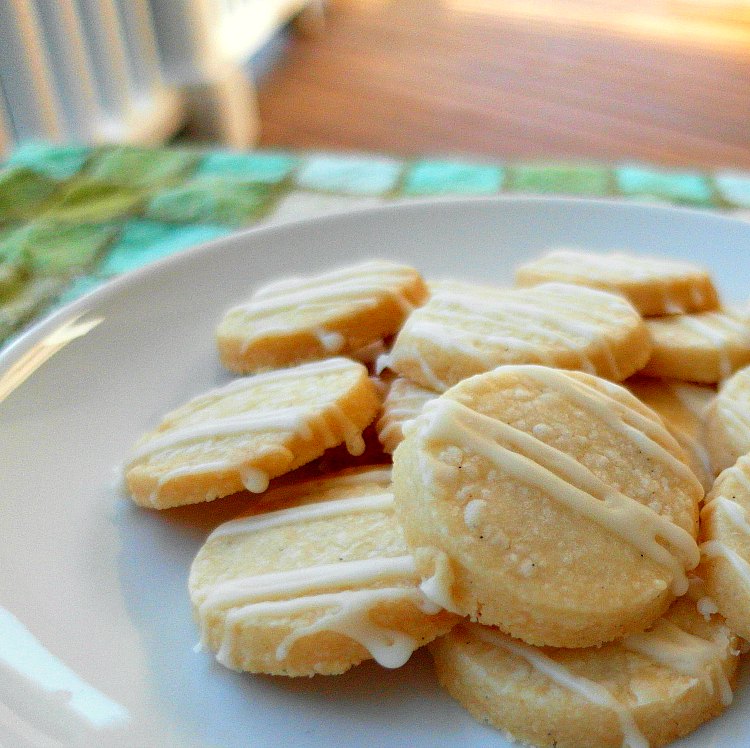
This might have been the most surprising of the “tests” I ran.
Here’s what I did:
- I made a batch of Chris’s (from Café Sucré Farine) vanilla bean shortbread
- I divided the creamed butter, powdered sugar and salt among three bowls, mixing in the vanillas and then the flour/corn starch mixture by hand.
- I added 1/2 teaspoon of vanilla to what ended up being about 7 oz of dough per batch.
Honestly, I could detect almost no difference among the three batches of cookies. When warm, and even when cool, the Tahitian batch had more of a vanilla aroma–sweetly vanilla–than the other two, but flavor-wise I really couldn’t taste the difference. I tried, too. Often. Heh.
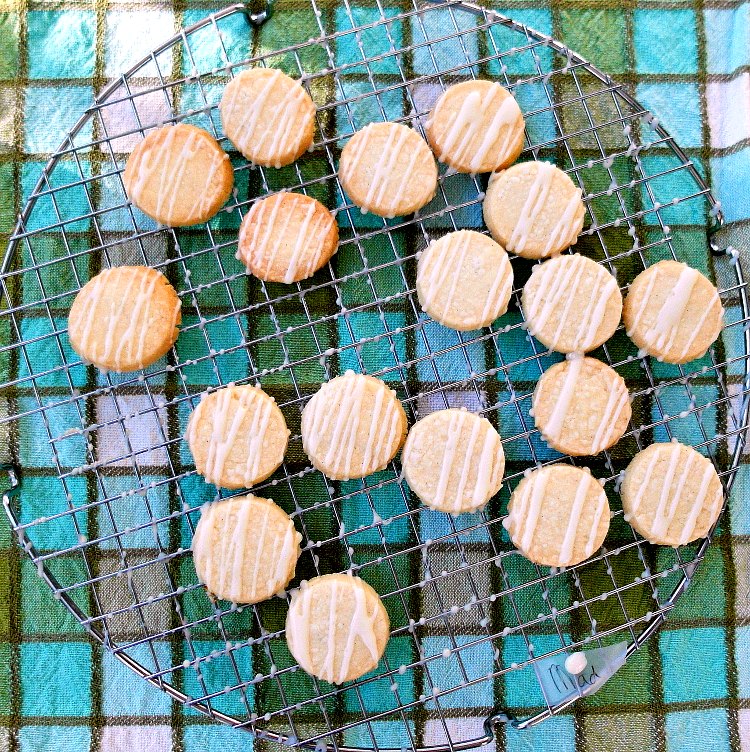
I really do wish that I had made a plain batch of cookies to test against since I really couldn’t taste the differences at all.
Making Homemade Vanilla Extract with Different Types of Vanilla Beans
The good news about making your own vanilla extract is that you can use all the types of vanilla beans to make one Super Complex Vanilla Extract.
You can of course make your extract out of all of one type of bean, but why not have fun and make custom blends? Use a combination of Madagascar and Mexican beans. Or Madagascar and Tahitian. Have fun with it!
How Many Beans to Use In Your Extract
I like my vanilla to be very strong so I can use less, so I tend to use 6 beans per 8 oz of alcohol. I used 2 each of Madagascar, Mexican and Tahitian beans.
You can get away with using 4 beans per 8 ounces of alcohol, but the flavor won’t be quite as concentrated.
How to Make Vanilla Extract
Making vanilla is very easy. NOTE: Some say you can’t make a true vanilla extract at home and that homemade is actually an infusion. Honestly, I don’t care either way. Homemade extract/vanilla infusion is delicious, and if it brings you joy to make it and/or give it as gifts, go for it!
- Buy vanilla beans. Cut a slit in each bean to have vanilla specks in your extract or leave them whole if you don’t want specks.
- Add your vanilla beans to a clean jar with a tight-fitting lid.
- Fill the jar with your choice of alcohol. You can use vodka, rum, or Bourbon whisky. (NOTE: the “Bourbon” in Madagascar Bourbon Vanilla has nothing to do with Bourbon whisky. Rather, Bourbon is a nod to French Colonial times and refers to any vanilla grown around the Indian Ocean.)
- Wait. Your vanilla will be ready in 4-6 weeks. Shake your jar once or twice a week (not truly necessary, but it will make you feel like you’re doing something besides waiting)
NOTE: Store your vanilla in a cool, dark place like a cabinet or pantry. It will last pretty much indefinitely, and you can top off your extract with more alcohol and throw an extra bean or two in every year or so.
Why Some Mexican Vanilla is “Shady”
The reason I thought Mexican vanilla extract is shady is because some of it is. (And here’s where I get sad for Mexico again).
Once folks began growing vanilla outside of Mexico and figured out how to pollinate it, Mexico pretty much got squeezed out of the vanilla business.
To try to compete. they started selling artificial/imitation vanilla and added extract of tonka bean to it.
Tonka bean extract smells and tastes like Extreme Vanilla, but apparently it has also been shown to damage the livers of lab animals, so the FDA banned it in the US.
If you buy Mexican vanilla and it is super-cheap (like $5 for a liter or something), it is probably flavored with tonka bean.
The good news is that it tastes kind of awesome. The bad news is that it’s illegal in the US and might damage your liver (although I think you’d pretty much have to drink it like soda for it to be harmful).
Real Mexican vanilla tastes super awesome, but it’s not cheap. The cost is pretty much on par with Madagascar and Tahitian extracts.
If you want to try some excellent Mexican vanilla, go with the Blue Cattle Truck Trading Company, based in the US, they source all their beans from a small farm in Mexico. This is the real deal, friends, and worth buying. Use it to make Mexican flan or to flavor the flan layer in chocoflan. You won't regret it!
Vanilla Taste Test of the Different Types of Vanilla: The Take-Aways
- The differences among the three types of vanilla are very subtle, although I do think that Tahitian alone isn’t worth using in baking or cooking, unless you’re making perfume. The Sonoma Syrups folks have it right, I think: mix Madagascar Bourbon and Tahitian vanillas for both a well-rounded vanilla flavor and a vanilla-forward aroma. If you happen to own some Vanilla Bean Crush, try mixing it with the Mexican vanilla, too. I’ll probably do that on my own, and if the combination is life-changing, I will let you know.
- Buy real vanilla, made from vanilla beans. Artificial vanilla is really too one-note and rather bull-in-a-china-shop-ish. It’s clumsy vanilla. For vanilla flavor, I really don’t think you can go wrong with either Madagascar Bourbon or the Mexican. Yes, the Mexican is a touch deeper and more mysterious, but again, the difference is fairly subtle and you might not even be able to tell the two apart if you don’t have them side by side.
- At the end of the day, really only one of my preconceived notions held up: Tahitian vanilla is all about the aroma. Not that it doesn’t also taste good–it has a lovely, floral flavor. As to Madagascar Vanilla being the gold standard of vanillas, all I have to say about that is that is that the beans (and their natural pollinators) originated in Mexico.
And that is pretty much all I have to say about that. I hope you find this post useful and if you’ve ever wondered about the differences among different types of vanilla, now you know.
Questions?
If you have any questions about this post or recipe, I am happy to help.
Simply leave a comment here and I will get back to you soon. I also invite you to ask question in my Facebook group, Fearless Kitchen Fun.
If your question is more pressing, please feel free to email me. I should be back in touch ASAP, as long as I’m not asleep.

Hi, y’all! I hope you’ve enjoyed this post and hopefully also learned a thing or two.
If you like my style, I invite you to sign up for my occasional newsletter, The Inbox Pastry Chef.
Expect updates on new and tasty recipes as well as a bit of behind-the-scenes action. I hope to see you there!



Join in Today!
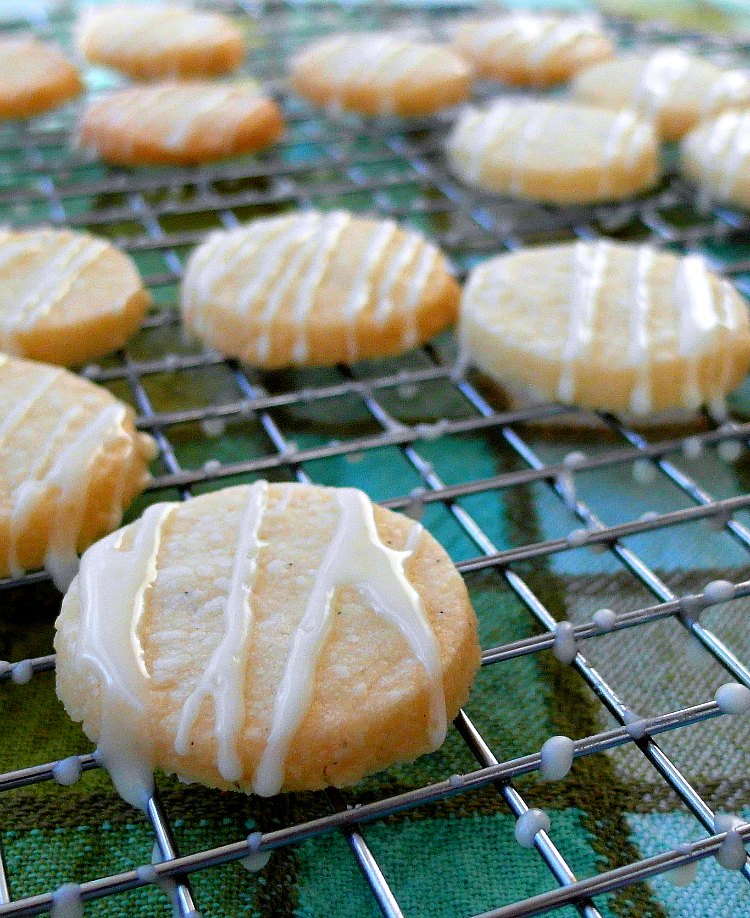
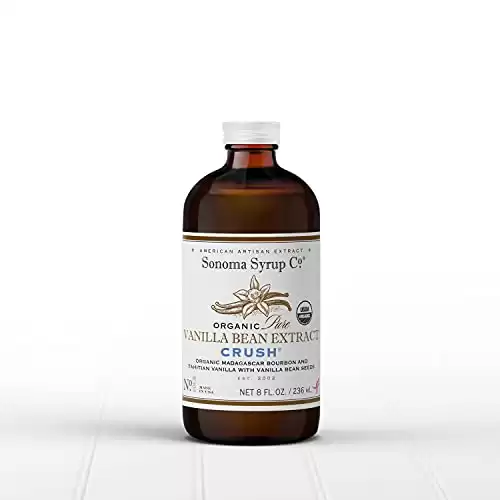
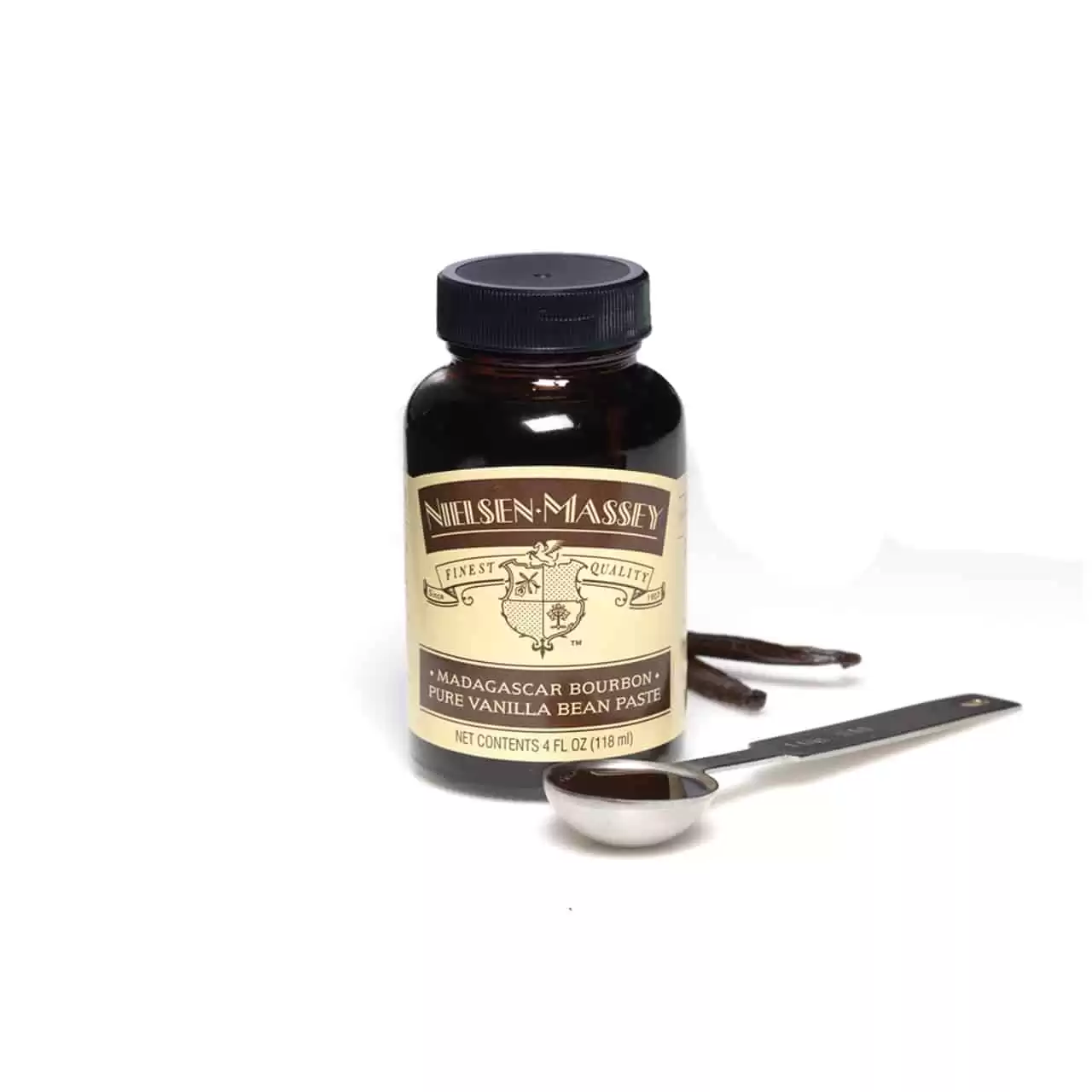

Jennifer, would you please re-evaluate and update your article for Fall, 2019?
In October, 2019, I looked up Nielsen-Massey Madagascar Bourbon Pure Vanilla Extract on Williams-Sonoma’s website and the recent reviews posted within the past 12 months bitterly complained about their reduction in quality. One reviewer posted “I have used this product (N-M Madagascar Bourbon Vanilla) for over 10 years. My recent purchases through Williams-Sonoma have been very disappointing. The product is much thinner and the aroma is weaker than the previous the bottles I’ve bought.”
I also looked up Watkins Pure Vanilla Extract on Watkins’ website and again, the reviewers complained about the reduction in quality, some posted as long as 2 years ago! (Perhaps Watkins was the first brand to start altering their original recipe for producing vanilla extract.)
With the extreme shortage of quality vanilla beans, it seems that even the most trusted brands for vanilla extracts are now producing inferior products…and at higher prices.
And even if I were to start making my own vanilla extract, how would I know that I am purchasing quality vanilla beans? Could you tell me what to look for? Could you tell who to buy them from?
An update and your expert advice would be so much appreciated.
Good points all. I wrote this post several years ago. I wish I could find some “old” vanilla and compare it to the newer vanilla across brands. I will see what I can come up with for you. As a general rule, I don’t get too worked up over the type/grade of beans for making extract since the alcohol will extract the flavor regardless. For fresh use, my vote is Grade A if you can find them and want to pay a premium. But as you’ve noted, since folks seem to be getting away with making less concentrated vanilla because of cost, even using Grade B beans in a higher concentration will yield a richer homemade vanilla than waht you can purchase.
Hi Jenni. I just read your great post about different types of vanilla extracts!!! I’m so glad I found your post because I was wondering about the differences of the 3 types!!! I always use either Madagascar bourbon or Mexican in my baking. I haven’t tried Tahitian yet and was curious about the taste and smell of it. After reading your post, now I know. Still, I’d like to try the Tahitian. Perhaps, I should do some experiments like you….Lol..!!!! Again, thanks for giving us the homemade vanilla extract recipe!!!!
Hey, Angeline! I’m so glad the post was helpful to you. Have fun experimenting with different proportions of different beans so you can make your own perfect vanilla extract! 🙂
So your vanilla comparison post is a couple years old now. Hope you don’t mind such a delayed comment! I bought some Mexican vanilla . . . and it was cheap, so I know what that probably means. 🙁 Anyway, to me it almost had a cinnamon flavour. Rather odd, huh? Maybe I should toss the rest of it? Anyway, your blog post was informative and I appreciate the info. you shared about your vanilla taste tests. 🙂
(Waiting for our local healthy pantry to receive their order of vanilla beans!)
Hey, Jill! So glad you enjoyed the post. It was a fun experiment. I’ve actually started making my own vanilla using all three types of beans together. It’s really good! And your Mexican vanilla is probably tonka, but you already knew that. I can’t imagine it’s awful for you unless you drink it like soda, and I am liking the idea of a cinnamony-vanilla. That’s how I flavor my coffee! Thanks for telling me about the cinnamon flavor–I didn’t even know that was a thing!
Mysterious Play-doh. I love that phrase. Great job on the post.
Glad you enjoyed it, Jeanette! And does Play Doh smell like vanilla? Or does vanilla smell like Play Doh? That is the chicken and egg question of the day! lol
I almost jumped up from my seat when you mentioned Play-Doh. Seriously. I thought I was the only one. I remember opening up a bottle of vanilla bean paste for the very first time, and thinking… wow… this smells like my childhood. It smells like… Play-Doh. Is something wrong with us? Lol.
Hahaha!! Someone else pointed out awhile ago that maybe the Play-Doh people made their product vanilla scented rather than vanilla smelling like Play-Doh. I guess they might have a point, but I don’t smell Play-Doh and think VANILLA! I smell good vanilla and think Play-Doh! lol 🙂
I love side by side comparisons and you did a great job. However, I have to disagree with you on the Tahitian Vanilla Bean. To me, it is a totally different flavor than the other two vanillas, it is not just about aroma. In fact, my favorite vanilla ice cream is made with Tahitian Vanilla Bean. And maybe because I use the actual vanilla bean?!? Just something to think about, I would not want people missing out on a truly distinct and wonderful flavor because they think it is only good for aroma.
Fair point. When I make my own vanilla, I try to use a mix of all three types of beans. They all bring their own characteristics to the party.
Thanks so much! In the 4 years since I’ve been using Madagascar Bourbon vanilla paste, it’s gone from $36/quart to $150-ish per quart now, so I’m exploring other options. Good to know that even though I love my NM, I can get (practically speaking) indistinguishable flavor with a lower price tag. Can’t wait for those crops to rebound!!
You and me both! Prices really are crazy!
Oh my goodness! This article has been very enlightening! I also only bought Costco vanilla but they increased the price so much that I am now looking at other brands. I always research brands on Amazon as they usually have the most options. Yet Amazon raised more questions like what’s the difference between bourbon and Madagascar vanilla? Lol. I really got a laugh out of that one! I researched Mexican vanilla and got dubious results as well because of the Tonka bean additive. Now I REALLY know the what Mexican vanilla is, and Tahitian as well (didn’t get that far in my research when your article popped up). I really would like to try a good Mexican vanilla and the Sonoma one as well. Reading all the comments, I was reminded that you can make your own vanilla extract. I may try that out in the future. For some reason vanilla beans (other than the ice cream-my favorite flavor) kind of scared me. I don’t know why but I was hesitant about them. I think it was all the bull I was fed on a tv show or something. “High quality vanilla beans”, “buy from a reputable seller” and a few other bits that freaked me out along with “EPENSIVE”. I am going to do my own research on beans and form my own conclusions. Thank you so much for writing this article!
I am so glad you got so much out of this–and that’s why I write these kinds of posts. That, and because I do love me some vanilla! Sonoma Crush is still my favorite, but I am also a huge fan of Mexican. Enjoy your trying and experimenting!
I loved this article! Thank you Jenni!
I’m so pleased! Happy vanilla-ing!
So this may or may not have been my most favorite blog post I’ve ever read. I loved how detailed you were and I was totally nerding out and got super giddy about buying a bunch of different kinds.
I usually make my own, but am almost out and forgot to start a new batch so I need something to last me the next six months and this was super helpful. Thank you so much!
Also, have you noticed a difference in the types/quality of alcohol used to make the extract? I usually use mid-shelf vodka, but am wondering if a higher/lower quality vodka would make a difference. I’ve also been interested in trying it with bourbon or rum instead…
This may or may not be my favorite comment ever, Alissa! I do think that extracts made with higher quality alcohol will have less of a harsh edge, but we usually use so little (plus heating which burns off the majority of the alcohol) that it most likely won’t make a huge difference. I think if you decide to play with rums, bourbon, etc, save those fancy ones for recipes where the vanilla flavor will really shine. Like Creme brulee, Creme Anglaise, pastry cream, etc. Have fun with all the vanilla!
I have been making my own extract for about 18 months now (so, a novice, really, since it takes 6 months to make a really terrific, strong extract), but I have only purchased grade A Madagascar beans off Amazon, and had wondered if I should save some money and move down to grade B or move to a different bean, like Tahitian. I’m thrilled to have found your taste testing post comparing all three. What a treasure, and it answered all of my questions as far as pros and cons. Really well done. Thank you so much for taking the time to experiment and post your results! Wonderfully helpful. Truly.
Hi, Melissa! Thanks so much for the comment, and I’m so pleased you liked the post!
Honestly, I think the grades of vanilla are based on size and plumpness. For my money, if I’m just going to coax out flavors with alcohol anywayf, I think I’d save a bit of cash and go with a bit lower grade. Maybe just slit them in half and then possibly quarters, lengthwise, to expose more of the insides to the alcohol.
I also found this article. They of course want you to buy their premium beans, so I’m not sure I would take their recommendation to use premium beans as gospel. Still, it’s a good article and talks about using beans from different origins to come up with different flavors. https://www.beanilla.com/blog/homemade-vanilla-extract
I really love the extract I made using equal numbers of Tahitian, Mexican and Madagascar beans. I heartily approve of your experimentation! If you are really digging mixing different beans, maybe one day you will go into the vanilla extract business! That would be kind of awesome, because not everyone is willing to take the time to blend their own vanilla. You could corner the market!
Let me add my grateful thank-you for this post to the others. I have been buying Costco’s vanilla for years as I make Mollie Katzen’s granola almost weekly for my husband and the recipe requires a tablespoon of vanilla. I looked up “vanilla planifolia” at last, hoping I had not been using an inferior product, and feel good about it now!
I’m glad you found the post useful! I really should jump on the granola making wagon, too. You’ve inspired me!
Hi Jennifer,
I really enjoyed your reviews of the different vanilla’s we find out there! I had to giggle though when you were describing the note as a “Bass” note rather than a “Base” note.
I’m sure Bass is great but just not with vanilla!
Thanks for your great review!
Thank uou for your comment. Bass (pronounced base) is the correct spelling for the term meaning “low” as in musical notes. Base as an adjective means crude, which was not my intent at all. It is a bass drum, not a base drum.
Oh ok.
I was thinking Base Note as in Perfume and fragrance meaning The base and middle notes together are the main theme of a perfume. Which could in theory transfer to a extract. Which I’m sure must have a Top Note, Middle Note and The Base note. And when I thought of Bass I thought of the fish. Hahaa
Have a good weekend. 🙂
Funny that I was thinking in musical terms and I’m not even a musician–and you were thinking in perfume terms! In the end, both terms mean the same thing, except for no fish involved! lol Hope you have a good weekend as well!
You should do a test where you dab each vanilla on your skin, let them dry down like perfume, and tell us which one smells the best 🙂
LOL Tina! I shall leave that one to you. Please report back with your findings! =)
I loved this article,it was a fun & informative read. It answered my googled question on the differences of the vanilla beans quite thoroughly, thank you. But I got so tickled about all the “vanilla smells like Play-Doh” comments! No one ever suggested that the really smart marketers at Hasbro intentionally scented Play-Doh to smell like that heart-warming, pleasant childhood memory-associated smell of vanilla – cookies baking in the oven (even if only the Pillsbury roll or pre-formed cookies!). Maybe to persuade (OK con) the Moms to buy it for the kids anyway despite the resulting mess it will inevitably be. 🙂
I’m so glad you found this post useful! And you could be right. It may be that Play Doh smells like vanilla and not the other way around! lol =)